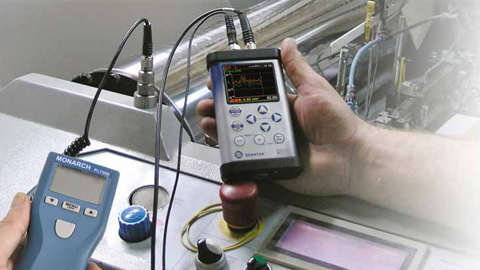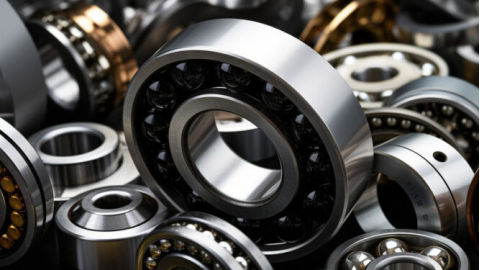Top 10 Position, Speed and Acceleration Measurement Companies
Position, speed, and acceleration measurement is fundamental to modern industry. These sensors provide the critical data that automated systems need to operate. They ensure precision, safety, and efficiency in applications from factory robots to vehicle safety systems. The demand for these technologies grows with the expansion of Industry 4.0 and the Internet of Things (IoT). This article highlights the leading companies that are defining this vital field.

Basics of Measurement Technology
Understanding the core technology is key. Position sensors measure linear or rotational displacement. Common types include Linear Variable Differential Transformers (LVDTs) and optical encoders. Speed sensors, like tachometers or encoders, generate a signal proportional to rotational or linear velocity. Accelerometers detect acceleration forces. They use various principles like piezoelectric, MEMS, or variable capacitance. Key performance specs are accuracy, resolution, bandwidth, and environmental durability. These sensors form the backbone of closed-loop control systems for real-time adjustment.
Analysis of Market Leaders
Several companies dominate the sensor market through innovation and a strong global presence.
TE Connectivity (TE) offers a vast portfolio of sensor solutions. This includes high-performance LVDTs for precise linear position and robust MEMS-based accelerometers.
AMETEK is recognized for its high-accuracy test and measurement instruments. They provide sensors for demanding applications in aerospace and defense.
STMicroelectronics is a major force in MEMS accelerometers. Their sensors are found in consumer electronics and automotive safety systems worldwide.
Robert Bosch GmbH focuses heavily on automotive sensors. Their accelerometers are critical components for electronic stability control and airbag systems.
Honeywell manufactures rugged industrial sensors. Their products are designed to perform reliably in harsh factory environments.
Other significant players include PCB Piezotronics for vibration measurement, Rockwell Automation for industrial encoders, and Allegro MicroSystems for magnetic position sensors. The market trend is moving toward smaller, smarter, and more integrated sensor solutions.
Innovation and R&D Focus
Leading companies invest heavily in research to push technological boundaries. TE Connectivity develops miniaturized sensors that can withstand extreme environments. STMicroelectronics pioneers ultra-low-power, high-precision MEMS accelerometers for IoT devices. AMETEK’s R&D focuses on accelerometers that operate reliably at very high temperatures for jet engines.
Common R&D goals include improving the signal-to-noise ratio, reducing physical size, and enhancing environmental ruggedness. There is also significant work on wireless sensors and energy-harvesting designs. These innovations eliminate the need for complex wiring in large systems.
Industry Applications and Case Studies
These measurement technologies enable advancements across many industries.
In automotive systems, accelerometers trigger airbag deployment during a crash. Encoders provide precise position feedback for electric power steering.
Manufacturing robots use high-resolution encoders for accurate joint positioning. This allows for precise assembly and welding tasks.
The aerospace sector relies on Inertial Measurement Units (IMUs). These units contain gyroscopes and accelerometers for navigation and monitoring aircraft health.
A clear case study is STMicroelectronics. Their MEMS accelerometers enable screen rotation in smartphones and motion control in video game consoles. TE Connectivity’s sensors monitor vibration in industrial machinery. This data helps predict maintenance needs before a failure occurs.
Selection Criteria and Considerations
Choosing the right sensor requires careful evaluation of several factors. First, define the required measurement range, accuracy, and resolution. Determine the needed output type: analog voltage, current loop, or a digital protocol like I²C or SPI.
Next, assess the operating environment. Consider temperature extremes, exposure to moisture (IP rating), and levels of shock and vibration. For high-speed applications, bandwidth and response time are critical parameters.
Finally, evaluate cost, availability, and the manufacturer's technical support. MEMS accelerometers are excellent for cost-sensitive, high-volume applications. LVDTs offer superior accuracy and reliability for industrial metrology. Sensors with built-in signal conditioning simplify design and reduce overall system cost.
Future Trends and Market Predictions
Emerging trends are shaping the future of sensor technology. The growth of IoT drives demand for low-cost, low-power sensors with digital outputs. Industry 4.0 promotes the use of smart sensors for predictive maintenance and data analytics.
Autonomous vehicles will require a new generation of high-performance, safety-rated IMUs. Technological advances include the wider adoption of optical encoders for non-contact precision and the integration of AI for smarter signal processing directly on the sensor.
Market analysts predict strong growth for this sector. This growth is fueled by increasing automation and stricter automotive safety standards. Companies are investing in innovations focused on miniaturization, intelligence, and connectivity to lead the market.




